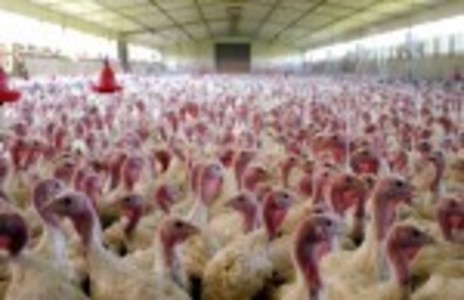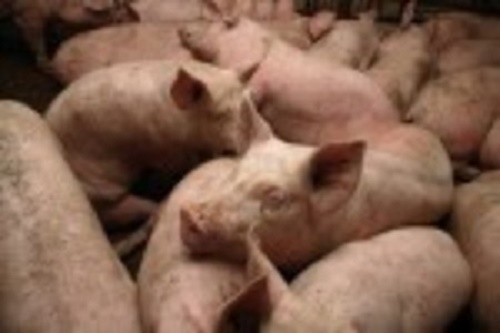A lot of antibiotics, growth hormones and myriad of antibiotic-resistant strains of bacteria, that’s what’s in your meat. The FDA’s Center for Veterinary Medicine released its third annual report on antimicrobials sold or distributed for food-producing animals in 2012. Guess what, the 2008 ‘guidance’ offered to industrial meat farmers to reduce the use of prophylactic antibiotics in their livestock isn’t working out so well. According the report, both antibiotic use and antibiotic-resistant strains of bacteria are increasing, rather rapidly, especially in poultry. In 2011:
- 29.9 million pounds of antibiotics were sold in the US for meat and poultry production
- 7.7 millions pounds of antibiotics were sold in the US for humans
Out of some 1840 retail meats tested (meats destined for sale, not the animals, the packaged meats in your supermarket):
- Escherichia coli (E. coli) bacteria was found in 64% of the samples. Pork chops had the lowest prevalence (39.8%) and ground turkey had the highest (80.2%). (Remember the connection between E. coli in poultry and treatment resistant urinary tract infections in women.)
- Salmonella bacteria was found in 44.5% of meats sampled and antibiotic resistance grew from 10-44% depending upon the strain of bacteria.
- Multi-drug resistance grew by 43% in chicken breast and 33% in ground turkey since 2010.
And that’s just the beginning. Earlier this year, researchers found the deadly methicillin-resistant staphylococcus aureus (MRSA) bacteria in pig farms and retail meats. MRSA was not tested in these samples, neither were growth hormones or growth promoting drugs like ractopamide – banned in other countries but not in the US – though fed to 60-80% of the livestock here and thought to be responsible for more sickened or dead pigs than any other drug on the market. Nope, those endocrine disrupting chemicals weren’t measured.
It seems we humans are a veritable garbage dump for chemical waste disguised as food. Thank you Big Ag! And thank you FDA for such a stellar job ‘regulating’ these chemicals. It was a stroke of brilliance letting these companies decide the safety of their own drugs and chemicals. It is much more efficient that way. And providing gentle ‘guidance’ to nudge them to do to the right thing – that shows leadership and an unparalleled commitment to human health.
I think it’s time for a new model, how about you?













